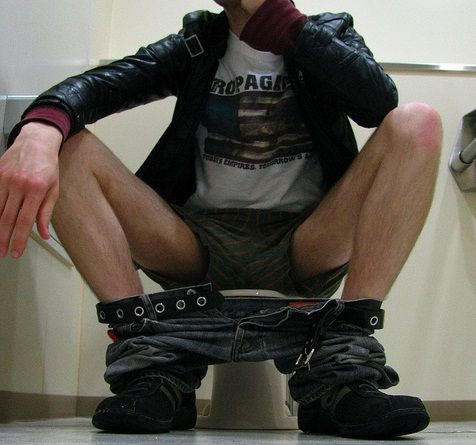Sitting vs Squatting: How Bathroom Posture Affects the Way You Poop

Ever sit on the toilet and find yourself straining to use the bathroom? Studies suggest your sitting position can greatly affect whether your experience in the bathroom will be a pleasant one.
In a study published in journal Digestive Diseases and Sciences, Dr. Dov Sikirov assessed whether sitting or squatting during defecation can make an individual's trip to the bathroom better or worse.
Dr. Sikiov instructed participants to defecate in three different positions: sitting on a 16-inch-high toilet, sitting on a 12-inch-high toilet, and squatting over a plastic container. Each participant was instructed to record how long each bowel movement took and gage how difficult their efforts were on a four-point scale.
The study demonstrated that when squatting, individuals took only 51 seconds to move their bowels, compared to the 130 seconds when sitting on a higher toilet. Additionally, when individuals were squatting they were more likely to rate their experience effortless.
In a following study conducted by Japanese researchers, subjects' rectums were filled with a contrast solution and then released the fluid in either a sitting or squatting position. Individuals were recorded by an X-ray video. Recordings demonstrated the anorectal angle increased from 100 to 126 degrees, when they moved from sitting to squatting. Furthermore, researchers also observed participants were less likely to strain when they squatted.
When you reduce your straining efforts you may also reduce the risk of developing hemorrhoids.
Hemorrhoids occur when veins become swollen in the lower portion of the rectum or anus. The pressure causes the veins to swell.
Hemorrhoids may be caused by straining during bowel movements, constipation, sitting for long periods of time, anal infections and certain diseases, such as liver cirrhosis. They can be either internal or external. Symptoms include anal itching, anal ache or pain, bright red blood on tissue or in the stool, pain during bowel movements and one or more hard tender lumps near the anus. If you experience any of these symptoms, consult with your healthcare provider.



























